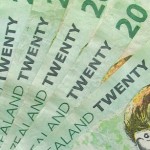Gold rose on Friday after the Peoples Bank of China cut benchmark interest rates to spur growth, recovering from earlier losses when the dollar strengthened against the euro. Copper gained as well.
Comex gold for delivery in December rose by 0.59% to $1 197.9 per troy ounce by 12:46 GMT, having shifted in a daily range of $1 201.1-$1 196.1. The precious metal slid for a second day on Thursday, settling the day 0.25% lower at $1 190.9. Prices are up 0.4% so far this week.
Gold recovered from earlier losses after Chinas central bank lowered its one-year deposit rate by 0.25% to 2.75%, while the one-year lending rate was cut by 0.4% to 5.6%. This was the first interest rate reduction since July 2012.
Although policy shifts by the Federal Reserve are considered as the major driver behind gold, an accommodative policy by any other major central bank is also deemed beneficial for gold, which is used as a hedge against inflation.
Eurozone prospects
Earlier in the day, the precious metal was pressured by a stronger dollar, which rallied against the euro after ECB President Mario Draghi said the central bank might expand its asset-purchase program to spur inflation, and added that “strong recovery is unlikely in the coming months”.
The central bank has launched a series of measures to ease credit tightness in the single currency bloc in order to spur growth and battle muted inflation, including cutting interest rates to record low and announcing plans to purchase securities.
The US dollar index for settlement in December surged 0.63% to 88.220 by 12:58 GMT. The contract hit a one-week high of 88.285 earlier in the session, not far off from November 14th’s 4-1/2-year high of 88.365. The greenback gauge is up 0.7% so far this week.
The dollar also drew support after data yesterday showed that existing home sales in the US rose by 1.5% in October to an annualized pace of 5.26 million, the highest since September 2013.
Meanwhile, the Philadelphia Fed Manufacturing Index surged to 40.8 in November, the highest since March 2011, vastly exceeding expectations for a drop to 18.5 from 20.7 in October.
Reflecting negative investor sentiment toward gold, assets in the SPDR Gold Trust, the biggest bullion-backed ETF, remained near the lowest level in six years on Thursday at 720.91 tons. Holdings in the fund fell to 720.62 tons on November 13, the lowest since September 2008.
The precious metal drew support after data yesterday showed that Russia expanded its gold reserves in October by 19.7 tons, while IMF statistics revealed that Azerbaijan, Belarus, Kazakhstan and Mauritius also increased their gold reserves. Russia has purchased about 150 tons of gold this year, central bank Governor Elvira Nabiullina said earlier this week.
However, Ukraine slashed its gold holdings to 840 000 ounces in October from 1.3 million a month earlier, compared to 1.36 million ounces at the end of 2013.
Investors also eyed an upcoming Swiss referendum on a proposal to change the central banks gold reserves policy. The poll showed that support for the proposal to ban the bank from selling its gold reserves and back at least 20% of its assets with the metal, compared to 7.8% in October, declined to 38% from 44% last month.
Copper
Copper also rose on hopes that a looser monetary policy in China would bolster growth and increase demand for the metal used in wiring and construction.
Comex copper for delivery in December gained 1.46% to $3.0635 per pound by 12:46 GMT, having earlier risen to $3.0710, the highest since November 4th. The red metal fell 0.84% on Thursday to $3.0195 and is up 0.6% so far this week.
The central banks bid to boost economic growth comes as the Asian economy is on track to post its smallest expansion in more than two decades.
“It makes a lot of sense to be loosening monetary policy,” said for CNBC Nic Brown, head of commodities research at Natixis. “It improves the outlook for growth at the margins, and means that those looking to stock up on metal will find credit a bit easier to get hold of.”
A preliminary private gauge showed yesterday that China’s manufacturing sector was at the threshold between expansion and contraction in November, fueling expectations for monetary easing.
The corresponding HSBC Flash China Manufacturing PMI fell to a six-month low of 50.0 in November, compared to October’s final reading of 50.4. The output sub-index declined to a seven-month low of 49.5, entering contraction territory, compared to 50.7 in October.
In Europe, manufacturing activity growth in powerhouse Germany also stalled in November, while business growth in the Eurozone as a whole slowed the most in 16 months, with the corresponding flash Composite Purchasing Managers’ Index touching 51.4, compared to 52.1 in the previous month.
Support on the demand side was provided by better-than-expected manufacturing and housing data from the US on Thursday, but a report earlier in the week showing Japans economy slid into recession in the third quarter dimmed demand prospects.





